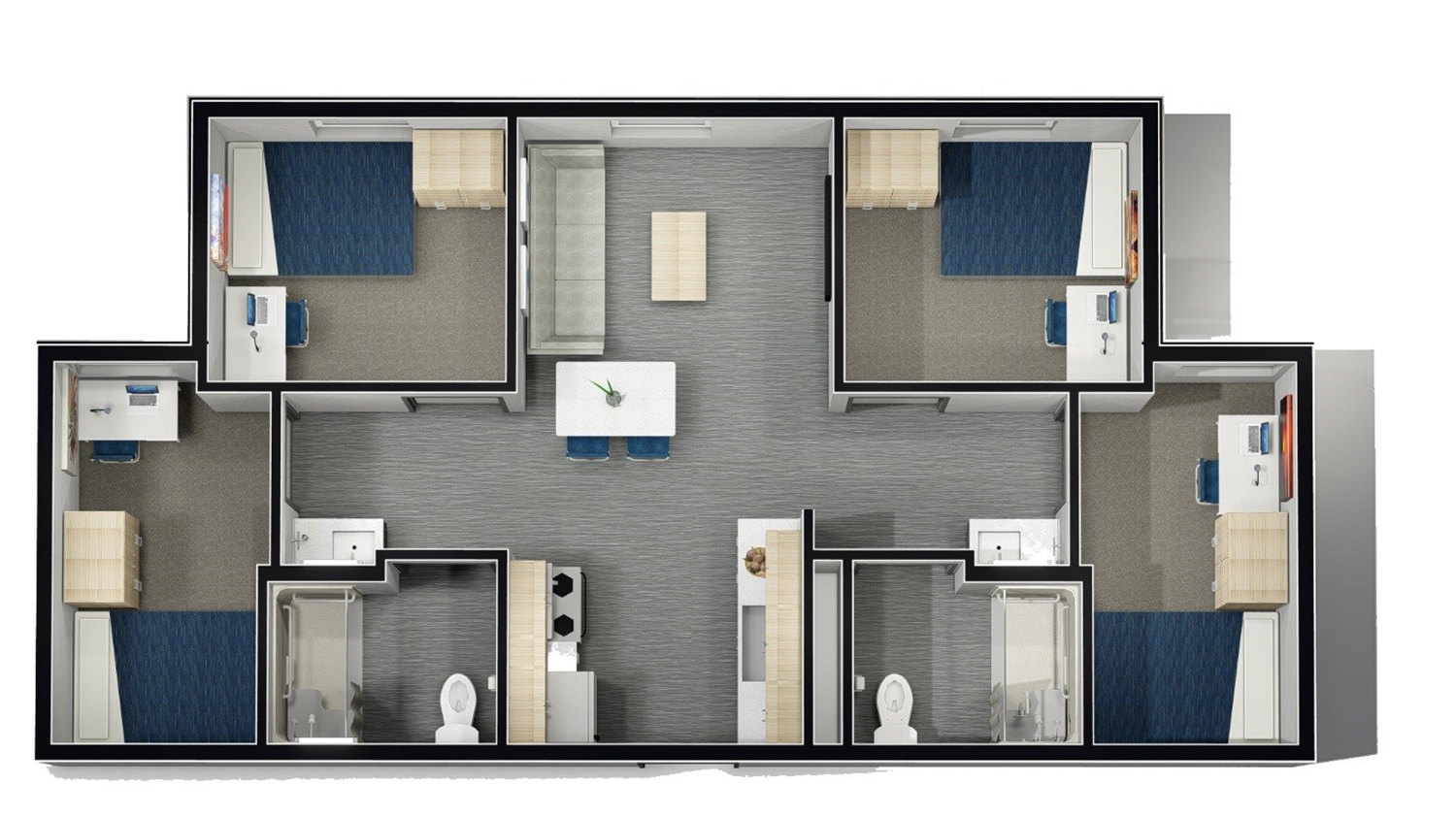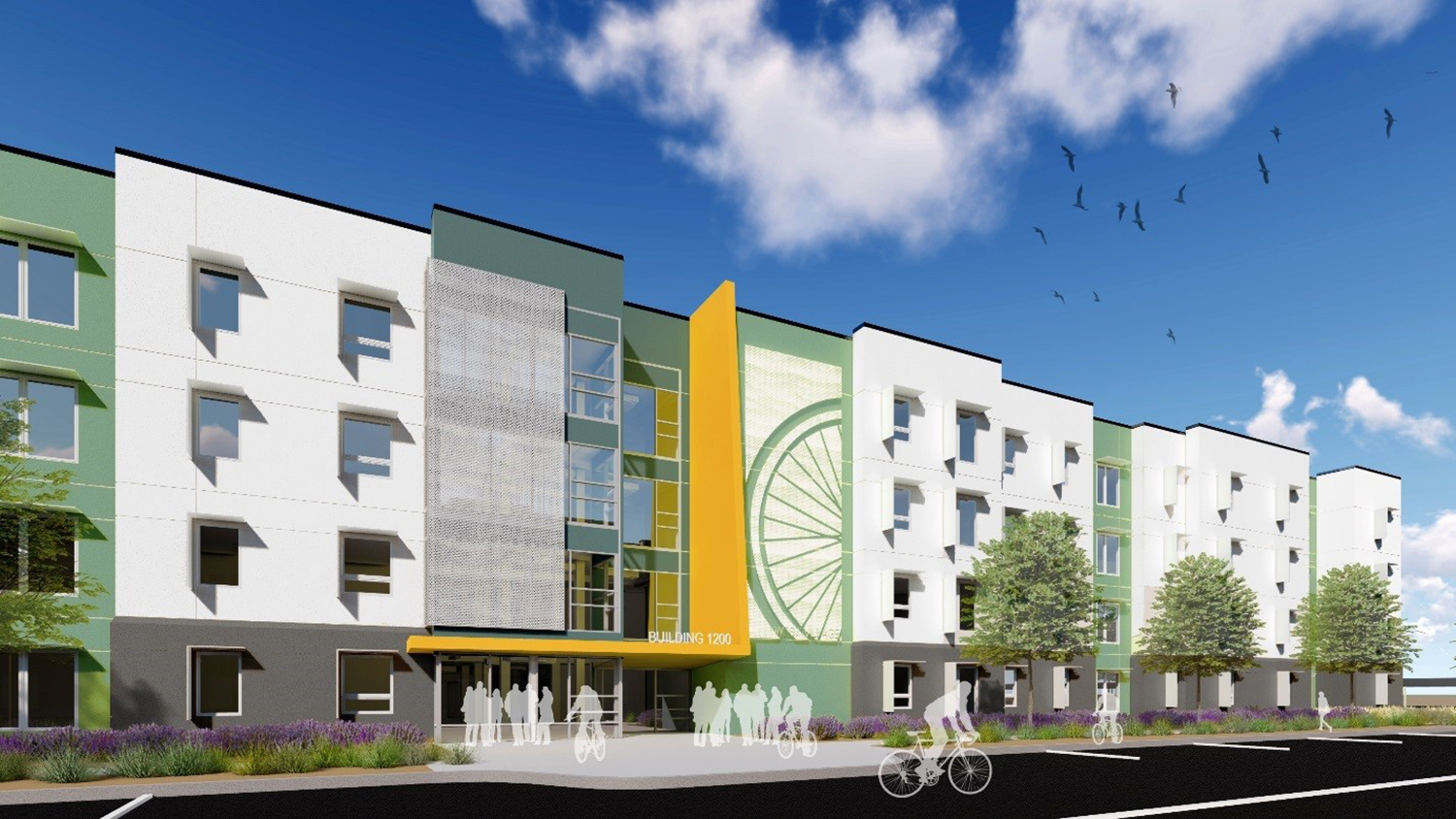Student housing projects serve as home away from home but still need to give the student residents the most authentic collegiate experience. Colleges and universities have embraced the idea of infusing local flavor into standardized principles to create residential facilities specific to that student population.
My recent design work on a student housing project at the University of California, Davis revealed the challenges and restrictions unique to California that make these types of projects unlike others in the rest of the country.
Building codes and regulations
California stands out as a unique market with its stringent building codes. Like other states, California uses the California Building Code (CBC), which is an International Building Code (IBC) modeled code. Unlike other states, the CBC has more additions and restrictive rules and regulations not common anywhere else.
The list of additional restrictions ranges from increased fire apparatus road access to limits on construction type, including some unusual limits on egress. For example, the IBC has long included a provision for sizing windows to allow for emergency egress in small residential buildings with one exit. California extends this requirement to large buildings of several major construction types which precludes using many unit layouts that cannot accommodate larger windows.
California Fire Code also impacts design by limiting building size based on construction type based on the fire-flow calculation area which measures the flow rate of a water supply available for fighting fires. This restriction reduces the allowable building area for certain construction types with impenetrable building separations and prohibits normal building functions like circulation and egress between both sides of the fire wall, which can severely limit program. To account for this constraint, we must either limit our building size or upgrade the construction type to one with a larger allowable fire flow area.
Like other building codes, the state governs accessibility using Chapter 11 of the California Building Code. While other states use ADA Guidelines and IBC’s code language that echoes the Fair Housing Act, California’s accessibility restrictions related to student housing are vast, comprehensive, and complicated. CBC uses Chapter 11A of the CBC to cover private housing and Chapter 11B of the CBC for public accommodations. Student housing on campus is unique because it is classified as transient housing and follows a mixture of both private and public depending on circumstance. Non-accessible units are required to provide for an uncommonly large amount of accessible clearances and adaptability provisions. Getting a feel for these door and appliance clearances and how to use them without producing units that are significantly larger is a particular challenge.
In addition, the number of units required for increased mobility grows depending on the age level of the student residents served, either graduate or non-graduate housing. Typically, the accessibility count is based on the unit count while in California undergraduate housing is by the bedroom.
 Ultra-efficient apartment unit that meets all the additional clearance requirements of California.
Ultra-efficient apartment unit that meets all the additional clearance requirements of California.
California housing market
Perhaps the most unique challenge is not created by the increased presence of codes, but by the California housing market itself. Up and down the state, California has one of the highest costs of housing in the country due to the cost of construction, housing demand, increased regulation, and sustainability requirements. These high costs result in increased pressure on reducing the size of units to reduce cost. Unit amenities common in other parts of the country are carefully considered for California units as they make them less affordable. California units frequently use galley kitchens, compressed TV viewing areas, smaller living areas, smaller vanities, more double-occupancy rooms, and armoires instead of closets for more flexible furniture arrangements. The skyrocketing cost of construction labor pushes us to use more prefabricated modular systems that come with a 1-2% increase in area to meet modularity.
Student housing design in California requires a balance between creating an engaging student space with adherence to building codes. The housing market and California’s code come with a set of tough demands, but an experienced design team can create a rich student residential experience anywhere.
This is the sixth blog in a multi-part series on technical aspects of student housing design. Earlier blogs focused on public-private partnerships, important questions to ask when designing a student unit, special-needs spaces, balancing affordability and comfort in acoustical design, and student housing vs. multifamily housing.
More from Author
Stantec | Jul 18, 2024
Why decarbonizing hospitals smartly is better than electrification for healthcare design
Driven by new laws, regulations, tariffs, ESG goals, and thought leaders in the industry itself, healthcare institutions are embracing decarbonization to meet 2050 goals for emissions reductions.
Stantec | Jun 18, 2024
Could ‘smart’ building facades heat and cool buildings?
A promising research project looks at the possibilities for thermoelectric systems to thermally condition buildings, writes Mahsa Farid Mohajer, Sustainable Building Analyst with Stantec.
Stantec | Jun 8, 2024
8 ways to cool a factory
Whichever way you look at it—from a workplace wellness point of view or from a competing for talent angle—there are good reasons to explore options for climate control in the factory workplace.
Stantec | Apr 18, 2024
The next destination: Passive design airports
Today, we can design airports that are climate resilient, durable, long-lasting, and healthy for occupants—we can design airports using Passive House standards.
Stantec | Mar 18, 2024
A modular construction solution to the mental healthcare crisis
Maria Ionescu, Senior Medical Planner, Stantec, shares a tested solution for the overburdened emergency department: Modular hub-and-spoke design.
Stantec | Nov 20, 2023
8 strategies for multifamily passive house design projects
Stantec's Brett Lambert, Principal of Architecture and Passive House Certified Consultant, uses the Northland Newton Development project to guide designers with eight tips for designing multifamily passive house projects.
Stantec | Apr 10, 2023
Implementing human-centric design in operations and maintenance facilities
Stantec's Ryan Odell suggests using the human experience to advance OMSF design that puts a focus on wellness and efficiency.
Stantec | Jul 6, 2022
5 approaches to a net zero strategy that communities can start right now
Whether your community has started on a plan or is still considering net zero, now is the time for all of us to start seriously addressing climate change.
Stantec | Feb 14, 2022
5 steps to remake suburbs into green communities where people want to live, work, and play
Stantec's John Bachmann offers proven tactic for retrofitting communities for success in the post-COVID era.
Stantec | Feb 8, 2022
How gaming technology is changing the way we design for acoustics
Adding 3D sound from gaming engines to VR allows designers to represent accurate acoustic conditions to clients during design.
















